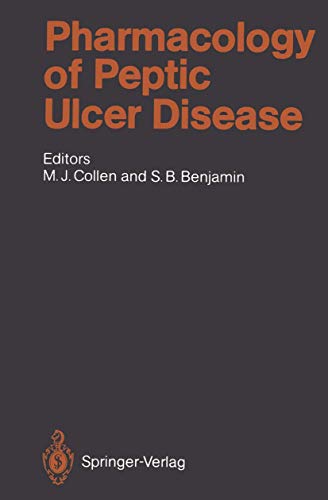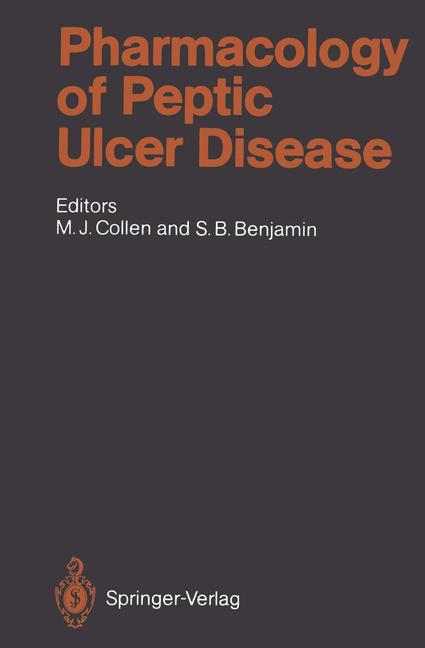
2011, ISBN: 3642758606
[EAN: 9783642758607], Neubuch, [PU: Springer Berlin Heidelberg], GROWTHFACTOR PATHOPHYSIOLOGY PHYSIOLOGY MEDIZIN PHARMAZIE GROWTH FACTOR PHARMACOLOGY PHARMAKOLOGIE PHARMACOLOGY/TOXICOLOGY… Mehr…
| AbeBooks.de |

2011, ISBN: 9783642758607
Taschenbuch
[ED: Kartoniert / Broschiert], [PU: Springer Berlin Heidelberg], Dieser Artikel ist ein Print on Demand Artikel und wird nach Ihrer Bestellung fuer Sie gedruckt. In this book the pathophy… Mehr…
| booklooker.de |

2011, ISBN: 9783642758607
Taschenbuch
[ED: Kartoniert / Broschiert], [PU: Springer Berlin Heidelberg], Dieser Artikel ist ein Print on Demand Artikel und wird nach Ihrer Bestellung fuer Sie gedruckt. In this book the pathophy… Mehr…
| booklooker.de |

2011, ISBN: 3642758606
[EAN: 9783642758607], Neubuch, [PU: Springer Berlin Heidelberg], GROWTHFACTOR PATHOPHYSIOLOGY PHYSIOLOGY MEDIZIN PHARMAZIE GROWTH FACTOR PHARMACOLOGY PHARMAKOLOGIE PHARMACOLOGY/TOXICOLOGY… Mehr…
| AbeBooks.de moluna, Greven, Germany [73551232] [Rating: 4 (von 5)] NEW BOOK. Versandkosten:Versandkostenfrei. (EUR 0.00) Details... |

2011, ISBN: 3642758606
Softcover reprint of the original 1st ed. 1991 Kartoniert / Broschiert growthfactor; pathophysiology; physiology, mit Schutzumschlag 11, [PU:Springer Berlin Heidelberg; Springer-Verlag … Mehr…
| Achtung-Buecher.de MARZIES.de Buch- und Medienhandel, 14621 Schönwalde-Glien Versandkosten:Versandkostenfrei innerhalb der BRD. (EUR 0.00) Details... |


2011, ISBN: 3642758606
[EAN: 9783642758607], Neubuch, [PU: Springer Berlin Heidelberg], GROWTHFACTOR PATHOPHYSIOLOGY PHYSIOLOGY MEDIZIN PHARMAZIE GROWTH FACTOR PHARMACOLOGY PHARMAKOLOGIE PHARMACOLOGY/TOXICOLOGY… Mehr…

Collen, Martin J. Benjamin, Stanley B. Benjamin, S. B. Boersch, G. Caldwell, S. H. Cattau, E. L. Collen, M. J. Doppman, J. Fleischer, D. E. Gardener, J. D. Graham, D. Y. Guglietta, A. Hollander, D. Howden, C. W. Hunt, R. H. Jensen, R. T. Johnson, D. A. Le:
Pharmacology of Peptic Ulcer Disease - Erstausgabe2011, ISBN: 9783642758607
Taschenbuch
[ED: Kartoniert / Broschiert], [PU: Springer Berlin Heidelberg], Dieser Artikel ist ein Print on Demand Artikel und wird nach Ihrer Bestellung fuer Sie gedruckt. In this book the pathophy… Mehr…

2011
ISBN: 9783642758607
Taschenbuch
[ED: Kartoniert / Broschiert], [PU: Springer Berlin Heidelberg], Dieser Artikel ist ein Print on Demand Artikel und wird nach Ihrer Bestellung fuer Sie gedruckt. In this book the pathophy… Mehr…

2011, ISBN: 3642758606
[EAN: 9783642758607], Neubuch, [PU: Springer Berlin Heidelberg], GROWTHFACTOR PATHOPHYSIOLOGY PHYSIOLOGY MEDIZIN PHARMAZIE GROWTH FACTOR PHARMACOLOGY PHARMAKOLOGIE PHARMACOLOGY/TOXICOLOGY… Mehr…
2011, ISBN: 3642758606
Softcover reprint of the original 1st ed. 1991 Kartoniert / Broschiert growthfactor; pathophysiology; physiology, mit Schutzumschlag 11, [PU:Springer Berlin Heidelberg; Springer-Verlag … Mehr…
Bibliographische Daten des bestpassenden Buches
| Autor: | |
| Titel: | |
| ISBN-Nummer: |
Detailangaben zum Buch - Pharmacology of Peptic Ulcer Disease
EAN (ISBN-13): 9783642758607
ISBN (ISBN-10): 3642758606
Gebundene Ausgabe
Taschenbuch
Erscheinungsjahr: 2011
Herausgeber: Springer Berlin
Buch in der Datenbank seit 2012-09-12T18:37:10+02:00 (Berlin)
Detailseite zuletzt geändert am 2024-01-31T11:24:22+01:00 (Berlin)
ISBN/EAN: 9783642758607
ISBN - alternative Schreibweisen:
3-642-75860-6, 978-3-642-75860-7
Alternative Schreibweisen und verwandte Suchbegriffe:
Autor des Buches: jensen, collen, rademaker, cölle, stanley, martin gardener, caldwell, cöllen, benjamin martin, graham benjamin, holländer, zollinger, hollander, fleischer, martin johnson
Titel des Buches: peptic ulcer, pep, handbook experimental pharmacology
Daten vom Verlag:
Autor/in: Martin J. Collen; Stanley B. Benjamin
Titel: Handbook of Experimental Pharmacology; Pharmacology of Peptic Ulcer Disease
Verlag: Springer; Springer Berlin
464 Seiten
Erscheinungsjahr: 2011-12-13
Berlin; Heidelberg; DE
Gedruckt / Hergestellt in Niederlande.
Sprache: Englisch
106,99 € (DE)
109,99 € (AT)
118,00 CHF (CH)
POD
XXII, 464 p.
BC; Hardcover, Softcover / Medizin/Pharmazie; Pharmakologie; Verstehen; growth factor; pathophysiology; pharmacology; physiology; Pharmacology; BB
1 Pharmacology of the Parietal Cell.- A. Introduction.- B. Anatomy of Gastric Mucosa.- C. Secretion by the Stomach.- I. General.- II. Secretion and Absorption by Surface Epithelial Cells.- D. Gastric Barrier.- E. Agents Thought to Affect Gastric Barrier function.- I. Sucralfate.- II. Prostaglandins.- III. Bismuth Compounds.- F. Ion Transport by the Parietal Cell.- I. Apical Surface.- II. Basal Lateral Surface.- III. Stimulation of Acid Secretion.- IV. Mechanism of Parietal Cell Stimulation.- G. Receptor Antagonists.- I. Muscarinic Antagonists.- II. H2 Antagonists.- H. Mechanism of Gastric Proton Pump.- I. Transport by ATPase.- II. Reaction Cycle.- III. Structure of Gastric H+, K+-ATPase.- J. Inhibitors of H+, K+-ATPase.- I. Omeprazole.- 1. Effects on Acid Secretion.- 2. Duration of Action.- 3. Mechanism of Action.- II Reversible H+, K+-ATPase Inhibitors.- III. Clinical Use of Pump Inhibitors.- References.- 2 Epidermal Growth Factor.- A. Introduction.- B. Perspective on Growth Factors.- C. Perspective on Mucosal Disease.- D. EGF Structure.- E. Structure-Activity Relationships.- F. Biological Effects.- G. Gastrointestinal Activity.- I. Developmental Effects of EGF.- II. Gastric Acid Secretion.- III. Trophic Effects.- H. Conclusion.- References.- 3 Gastrin and Other Peptide Hormones.- A. Introduction.- B. The Molecular Heterogeneity of Gastrin.- C. Gastrin Release.- D. Autonomic Control of Gastrin Release.- E. Bombesin-Like Peptides.- F. Somatostatin.- G. Mechanism of Gastrin-Induced Gastric Acid Secretion.- H. Gastrin and Peptic Ulcer Disease.- J. Hypergastrinemic Syndromes.- K. Conclusion.- References.- 4 The Role of Essential Fatty Acids in Gastric and Duodenal Protection and Ulcer Therapy.- A. Cytoprotection and Prostaglandins.- I. Definition of Cytoprotection.- II. Mucosal Sites of Cytoprotection.- 1. Protection of the Mucosal Microvasculature.- 2. Direct Protection of Gastric Mucosal Cells.- III. Metabolism of Natural and Synthetic Prostaglandins.- B. Arachidonic Acid Cascade and Prostaglandin Synthesis by Gastric and Duodenal Mucosa.- I. Arachidonic Acid Cascade.- II. Sources of Arachidonic Acid from Mucosal Pools.- III. Control of Mucosal Prostaglandin Synthesis.- C. Dietary Sources of Arachidonic and Linoleic Acids.- I. Food Sources.- II. Absorption of Dietary Essential Fatty Acids.- III. Distribution of Absorbed Essential Fatty Acids Between Organs.- IV. The Requirement for Detergents for the Intestinal or Gastric Absorption of Essential Fatty Acids.- D. Gastric Mucosal Synthesis of Endogenous Prostanoids from Dietary Essential Fatty Acids.- I. The Requirement for Detergents for Absorption of Dietary Essential Fatty Acids into the Gastric Mucosa.- II. The Requirement for Direct Gastric Mucosal Contact with Solubilized Essential Fatty Acids for Mucosal Protection.- III. Generation of Prostanoids by the Gastric Mucosa from Solubilized Essential Fatty Acids.- E. Gastric Mucosal Protection by Solubilized Essential Fatty Acids.- I. Angiogenic Effect of Essential Fatty Acids.- F. Dietary Intake of Essential Fatty Acids.- I. Animal Studies.- II. Human Intake of Dietary Essential Fatty Acids and Its Relationship to Peptic Ulcer Disease.- G. Potential Therapeutic Advantages of Dietary Essential Fatty Acids Over the Synthetic Prostaglandins.- I. Effect of Short-Term Treatment with Dietary Essential Fatty Acids on the Human Gastric Mucosa.- H. Summary and Conclusion.- References.- 5 Helicobacter pylori.- A. Introduction.- B. Clinical Relevance of Helicobacter pylori.- I. Frequency in the General Population and Association with Chronic Gastritis and Peptic Ulcer Disease.- II. Causation.- 1. Chronic Gastritis.- 2. Peptic Ulcer Disease.- C. Attempts to Eradicate Helicobacter pylori.- I. Natural History.- II. Eradication of Helicobacter pylori Infections.- III. Methods to Confirm Eradication of Helicobacter pylori Infections.- IV. Bismuth Salts.- V. Antimicrobials as Monotherapy.- VI. Drug Combinations.- 1. Triple Drug Combinations.- 2. Double Drug Combinations.- VII. Toxicity of Antimicrobials and Bismuth Salts.- VIII. Experimental Therapeutic Approaches.- D. Eradication of Helicobacter pylori and Peptic Ulcer Disease.- I. Effect on Gastritis.- II. Effect on Healing of Duodenal Ulcers.- III. Effect on Relapse Rates of Duodenal Ulcers.- IV. Effect on Relapse Rates of Gastric Ulcers.- E. Whom to Treat and What to Expect?.- F. Summary and Conclusions.- References.- 6 Development of a New Gastric Antisecretory Drug for Clinical Use.- A. General Considerations.- B. Etiology and Pathophysiology of Peptic Ulcer.- C. Scope for Pharmacological Intervention.- D. Clinical Development of a New Antisecretory Drug for Peptic Ulcer.- I. Phase I.- II. Phase II.- III. Phase III.- IV. Phase IV.- References.- 7 Therapeutic use of Omeprazole in Man: Pharmacology, Efficacy, Toxicity, and Comparison with H2 Receptor Antagonists.- A. Introduction.- B. Pharmacology.- I. General.- II. Plasma Concentrations.- III. Inhibition of Acid Secretion.- IV. Other Actions of Omeprazole.- 1. Effect on Secretion of Intrinsic Factor and Vitamin B12 Absorption.- 2. Effect on Pepsin.- 3. Effects on Motility.- 4. Effects on Gastric Endocrine function.- C. Therapeutic Trials in Acid-Peptic Diseases.- I. Overview.- II. DuodenalUlcer.- 1. Effect of Different Doses of Omeprazole.- 2. Comparative Studies of Omeprazole and H2 Receptor Antagonists.- 3. Relapse After Stopping Omeprazole Therapy.- 4. Omeprazole Treatment for Ulcers Resistant to H2 Receptor Antagonists.- III. Gastric Ulcer.- 1. Noncomparative Studies of Omeprazole.- 2. Comparative Studies of Omeprazole and Ranitidine.- 3. Relapse After Stopping Omeprazole Therapy.- 4. Omeprazole Treatment for Ulcers Resistant to H2 Receptor Antagonists.- IV. Reflux Esophagitis.- 1. Effect of Different Doses of Omeprazole.- 2. Comparative Studies of Omeprazole and H2 Receptor Antagonists.- 3. Relapse After Stopping Omeprazole Therapy.- 4. Omeprazole Treatment for Reflux Esophagitis Resistant to H2 Receptor Antagonists.- V. Zollinger-Ellison Syndrome.- VI. Side-Effects and Toxicity.- D. Probable Role of Omeprazole in Acid-Peptic Diseases.- References.- 8 Hypothesis of Peptic Ulcer: A Modern Classification of a Multifactorial Disease.- A. Introduction.- B. Histopathology of Peptic Ulcer.- I. Ulcer Histology.- II. Gastritis — Definitions.- 1. Endoscopic Gastritis.- 2. Histologic Gastritis.- C. Schwarz’s Balance.- I. Mucosal Defenses.- 1. Measurement of the Barrier.- 2. The Mucus Gel and pH Gradient.- 3. Mucosal Healing.- 4. Mucosal Bloodflow.- 5. Other Mechanisms of Defense.- II. Aggressive Factors.- 1. Hydrogen Ion.- 2. Aspartic Proteinases.- 3. Bile Acids.- 4. Oxygen Free Radicals.- III. Risk Factors as Modifiers of Mucosal Defense.- 1. Blood Groups.- 2. Tobacco Use.- IV. Regulation of Mucosal Defenses: Prostaglandins and Epidermal Growth Factor.- 1. Role of Prostaglandins in Mucosal Defense.- 2. Epidermal Growth Factor and Other Factors.- D. Classification of Peptic Ulcer Disease.- E. Drug-Induced Ulcer Disease.- I. Nonsteroidal Anti-Inflammatory Drugs and Aspirin.- 1. Mechanisms of NSAID-Induced Injury.- 2. Lesions Associated with NSAID Ingestion.- 3. Helicobacterpylori and NSAID Ingestion.- II Drug-Induced Ulcers — Alcohol.- 1. Mechanisms of Injury.- 2. Ethanol ad Ulcers.- III. Drug-Induced Ulcers — Steroids.- 1. Corticosteroids and Ulcers.- 2. Effects of Corticosteroids on the Mucosa.- F. Helicobacter pylori and Peptic Ulcer.- 1. Helicobacter pylori.- 2. The Effect of Helicobacter pylori on the Mucosa and the Host Response.- 3. Helicobacter pylori- Associated Gastroduodenal Ulcers.- G. Ulcers Associated with Hypersecretory States.- H. Malignant Ulcers.- J. Other Types of Chronic Relapsing Peptic Ulcer.- K. Acute Mucosal Stress Ulceration.- L. Summary.- References.- 9 Nonulcer Dyspepsia.- A. Introduction.- B. Definition.- C. Epidemiology.- D. Categories of Nonulcer Dyspepsia.- I. Gastroesophageal Reflux-Like Dyspepsia.- II. Dysmotility-Like Dyspepsia.- III. Ulcer-Like Dyspepsia.- IV. Aerophagia.- V. Idiopathic/Essential Dyspepsia.- E. Pathophysiology.- I. Gastric Acid.- II. Helicobacter pylori.- III. Motility.- IV. Psychosocial Factors.- V. Environmental Factors.- F. Diagnostic Approach.- G. Treatment.- H. Prognosis.- J. Conclusions.- References.- 10 The Natural History of Duodenal Ulcer Disease: Has it been Altered by Drug Therapy?.- A. Introduction.- B. Incidence of Duodenal Ulcer — Historical Perspectives.- I. Cohort Phenomena.- C. Recent Time Trends in the Incidence of Duodenal Ulcer.- D. Geographic Influences.- E. Recent Trends in Hospitalization and Surgery for Duodenal Ulcer.- F. Seasonal Variations in Duodenal Ulcer.- I. Seasonal Variations Studied Endoscopically.- G. Natural History of Duodenal Ulcer — Pre-H2 Blocker Studies.- I. Scandinavian Studies.- II. European Studies.- III. CURE Study.- H. Duodenal Ulcer Disease in the H2 Blocker Era.- I. How Long Does a Duodenal Ulcer Stay Healed After Treatment?.- J.Role of Helicobacter pylori.- K Natural History of Untreated Ulcers.- L. Natural History of Unhealed Ulcers.- M. Can Drug Therapy Prevent Duodenal Ulcer Relapse?.- N. Other Agents for “Short-Term” Maintenance Therapy.- I. Antacids.- II. Anticholinergics.- III. Tricyclic Antidepressants.- IV. Sucralfate.- V. Bismuth.- VI. Omeprazole.- O. How Long Should Maintenance Therapy Be Continued?.- I. On-Demand Versus Intermittent Therapy.- P. Summary.- References.- 11 Refractory Duodenal Ulcer.- A. Introduction.- I. Definition.- II. Adequate Treatment and Compliance.- III. Hypersecretory Disorders and Nonpeptic Ulcer Disease.- B. Factors Which Affect Healing and Recurrence.- I. Acid Hypersecretion.- 1. Parietal Cell Sensitivity.- 2. Tolerance.- 3. Rebound Hypersecretion.- 4. Gastrin.- 5. Clinical Significance.- II. Smoking.- III. Nonsteroidal Anti-Inflammatory Drugs.- IV. Helicobacter pylori.- V. Ulcer Morphology.- C. Outcome of Refractory Duodenal Ulcer Treatment Trials.- I. Acid Suppression.- II. Mucosal Protective Agents.- III. Surgery.- D. Management.- I. General Advice.- II. Specific Treatment.- References.- 12 Idiopathic Gastric Acid Hypersecretion.- A. Introduction.- B. Method of Doing Gastric Analysis.- C. Definition of Idiopathic Gastric Acid Hypersecretion.- I. Statistical Definition.- II. Functional Definition.- D. Diseases Associated with Idiopathic Gastric Acid Hypersecretion.- I. Gastroesophageal Reflux Disease.- II. Duodenal Ulcer Disease.- III. Gastric Ulcer Disease.- IV. Nonulcer Dyspepsia.- E. Comparison of Idiopathic Gastric Acid Hypersecretion and Zollinger-Ellison Syndrome.- I. Characteristics.- II. Basal Acid Output, Maximal Acid Output, and Basal Acid Output/Maximal Acid Output Ratio.- F. Helicobacter pylori Associated with Idiopathic Gastric AcidHypersecretion.- G. Therapy for Idiopathic Gastric Acid Hypersecretion.- H. Other Data on Idiopathic Gastric Acid Hypersecretion.- I. Basal Acid Output in Children.- II. Basal Acid Output in Other Disorders.- J. Conclusions.- References.- 13 Zollinger-Ellison Syndrome: Advances in Diagnosis and Management.- A. Introduction.- B. Pathophysiology.- C. Clinical Features.- D. Provocative Tests.- E. Differential Diagnosis of Disorders with Increased Basal Acid Output and Increased Fasting Gastrin Concentration.- F. Medical Therapy.- I. H2 Receptor Antagonists.- 1. General.- 2. Absorption and Excretion of H2 Receptor Antagonists.- 3. Studies in Patients with Zollinger-Ellison Syndrome.- 4. Potency.- 5. Onset of Action.- 6. Duration of Action.- 7. Failure.- 8. Safety.- 9. Use.- 10. Use of Parenteral H2 Receptor Antagonists.- II. Omeprazole.- 1. General.- 2. Absorption, Metabolism, and Excretion.- 3. Onset of Action.- 4. Duration of Action.- 5. Potency.- 6. Failure..- 7. Use.- 8. Safety.- III. Anticholinergic Agents.- IV. Prostaglandins.- V. Somatostatin or SMS 201–995.- VI. Gastrin Receptor Antagonists.- G. Surgical Therapy.- H. Tumor Localization.- J. Treatment of Metastatic Disease.- References.- 14 The Pathophysiology and Treatment of Gastroesophageal Reflux Disease.- A. Introduction.- B. The Nosology of Reflux.- C. Why Do Humans Reflux?.- D. Variability of Tissue Response to Reflux.- E. Sequelae of Gastroesophageal Reflux.- F. Extraesophageal Manifestations of Reflux.- G. Testing in Gastroesophageal Reflux.- H. Treatment of Gastroesophageal Reflux.- J. Surgery in Gastroesophageal Reflux.- K Management in Real Life.- L. Summary.- References.- 15 Endoscopy in the Evaluation and Treatment of Acid-Peptic Disease.- A. Introduction.- B. Accuracy.- C. Safety.- D. UncomplicatedAcid-Peptic Disease.- I. Endoscopy as the Initial Diagnostic Modality.- II. Endoscopy Following a Radiologic Procedure.- 1. Negative Upper Gastrointestinal Series.- 2. Gastric Ulcer.- 3. Duodenal Ulcer.- III. Biopsy and Cytology.- IV. Disease Follow-up.- E. Gastrointestinal Bleeding from Acid-Peptic Disease.- I. Guidelines for Intervention.- II. Stigmata of Bleeding.- III. Endoscopic Hemostasis.- 1. Electrocoagulation.- 2. Photocoagulation.- 3. Heater Probe.- 4. Chemical Injection.- 5. Comparison of Hemostatic Modalities.- F. Gastric Outlet Obstruction.- G. Summary.- References.- 16 Videoendoscopy and Digital Imaging.- A. Introduction.- B. Charge-Coupled Devices and Videoendoscopy — How They Work..- I. Background.- II. CCD function.- III. Image Transfer.- IV. Microprocessor function.- V. Color.- 1. Background.- 2. Videoendoscopic Color Reproduction.- VI. Technical Evaluation.- VII. Clinical Use.- C. Practical Benefits and Advantages of Videoendoscopy.- I. Image Storage, Retrieval, and Transfer.- II. Teaching/Other.- D. Special Applications.- I. Measurement of Lesion Size.- II. Real-Time Image Analysis.- III. Image Modification.- IV. Chromoscopy and Infrared Imaging.- V. Mucosal Hemodynamics.- VI. Videoenteroscopy.- E. The Future.- References.Weitere, andere Bücher, die diesem Buch sehr ähnlich sein könnten:
Neuestes ähnliches Buch:
9783540112396 Cyclic Nucleotides: Part II: Physiology and Pharmacology: Bd. 58/2 (Handbook of Experimental Pharmacology / Cyclic Nucleotides) (P. D. Kebabian, M. D. Nathanson)
- 9783540112396 Cyclic Nucleotides: Part II: Physiology and Pharmacology: Bd. 58/2 (Handbook of Experimental Pharmacology / Cyclic Nucleotides) (P. D. Kebabian, M. D. Nathanson)
- 9783540528401 Pharmacology of Peptic Ulcer Disease (Handbook of Experimental Pharmacology (99), Band 99) (Martin J. Collen, Stanley B. Benjamin, S.B. Benjamin, G.M.A. Börsch, S.H. Caldwell, E.L. Cattau, M.J. Collen, J. Doppman, D.E. Fleischer, J.D. Gardener, D.Y. Graham, A. Guglietta, D. Hollander, C.W. Howden, R.H. Hunt, R.T. Jensen, D.A. Johnson, J.H. Lewis)
- 9780387528403 Pharmacology of Peptic Ulcer Disease (Handbook of Experimental Pharmacology) (J. Collen, Martin and Stanley B. Benjamin)
< zum Archiv...



